| At a glance | |
|---|---|
| Product | Acer Iconia Tab (W500) [Website] |
| Summary | Windows-based tablet bundled with keyboard dock. |
| Pros | • Nice video quality • Great sound quality • Five finger quick menu access |
| Cons | • Windows based • Can’t fold screen over keyboard • Off balance when docked |
Typical Price: $80 Buy From Amazon
|
||||||||||||||||||||||||||||||||||||||
Introduction
The Acer Iconia Tab W500 is the A500 Iconia Tab’s lesser-known sibling with two “features” that make it destined for clearance on Woot or a cult classic.
The first is the choice of Windows 7 OS, which is not known as a great tablet OS. The other differentiation is a keyboard unit that, unlike the ASUS Transformer, comes standard with the W500. But the implementation is so awkward that you wonder why Acer made it the way they did.
Unboxing the W500 showed attention to detail. The tablet is wrapped in a protective cloth bag and housed on the top under a layer of protective cardboard. Below the main unit is the keyboard attachment that covers the documentation and software CDs. The power cord is housed in a separate compartment on the right hand side of the package.
Out of the box, the tablet weighs 2.14 pounds. This does not sound heavy, but I noticed the weight while reading in bed or laying down. The keyboard attachment weighs 1.34 pounds, putting the combined weight at 3.48 pounds.
Hardware
The W500 runs on an AMD dual-core 1.0 GHz processor with 1MB L2 cache, 2 GB of DDR3 RAM and 32 GB solid state hard drive so it has what it takes to be powerful enough for average use. Graphics are handled by a Radeon HD 6250 GPU that offers clear video and sharp colors.
The 10.1” display is bordered by a one inch black frame, making the screen smaller than it could have been. While viewing HD pictures, the details really stand out. Visually, the display is pleasing to the eye and offers a smooth, non-pixilated browsing experience.
Two 1.3 MP cameras are mounted on the front and rear of the case. The rear camera does not have a flash. Indoor picture and outdoor picture quality is poor compared to other tablets.
Network connection is via a single-band (2.4 GHz) 802.11 b/g/n Wi-Fi radio and 10/100 Ethernet port when docked to the keyboard unit. Bluetooth 3.0+HS connectivity is also included, but 3G / 4G WWAN options are not available.
Due to the keyboard unit, there W500 has more ports than the average tablet as shown in the diagram below from the user manual. The tablet / display unit has one USB port, one HDMI port, one headphone jack and a two-way card reader that supports full-sized SD (Secure Digital) and MMC (MultiMediaCard) media.
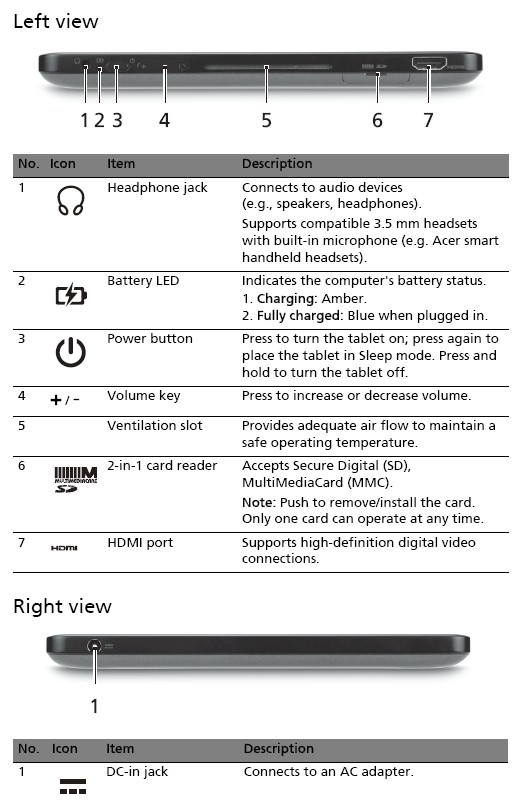
Left and Right ports
The keyboard attachment comes with an Ethernet and USB port. Volume and power buttons are located on the top left side, out of the way so accidental pressing should not be a problem. There is a Windows button on the lower left of the tablet. I’ve included a full set of port and control diagrams from the user manual in the gallery as well as photos.
There are a few options that make this tablet stand out from the crowd. Acer has deployed its multi-touch interface that can be accessed by placing all five fingers on the screen. This opens a menu shown in the photo below where you can navigate to various programs and features. These include quick access to your games, calculator, camera, snipping tool, sync option and favorite websites that are broken down by category.
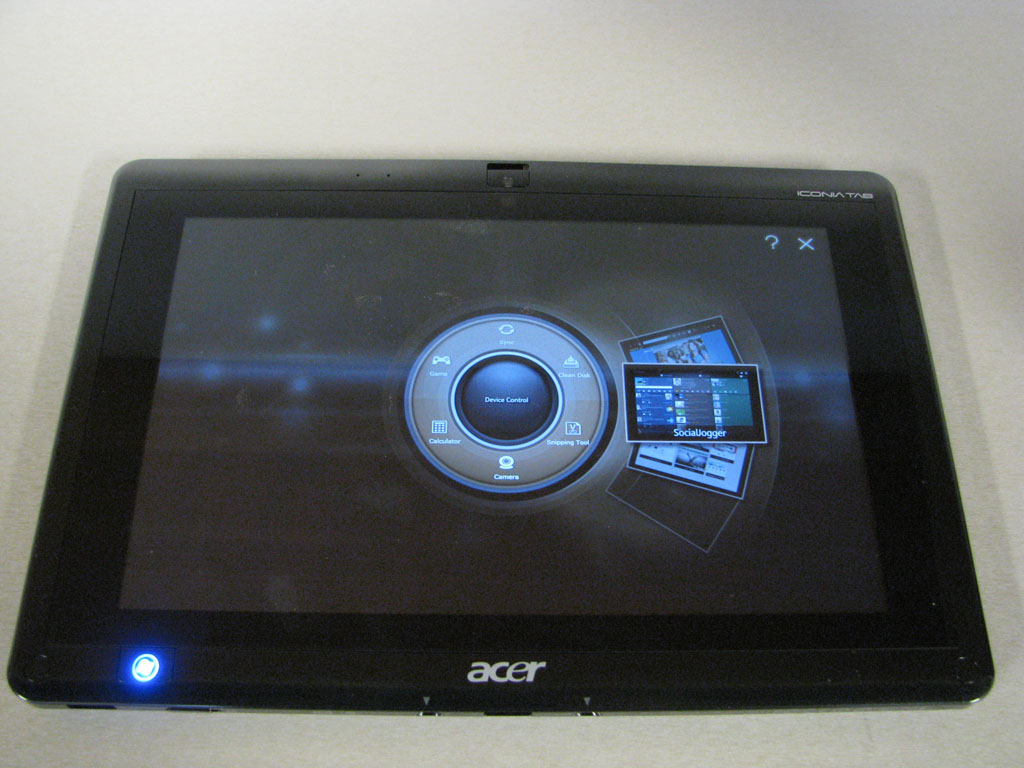
Quick menu
Another unique feature is the plug and play keyboard that connects to the tablet screen unit. If the tablet is docked, the fully functional keyboard and mouse button become your primary control center. This works well for control but fails in design.
The keyboard and docked screen is not weighted correctly and is top-heavy, lifting the front end of the keyboard off of the table as shown in the photo below. You also can’t tilt the screen to adjust viewing angle, nor can you flip it around and fold it on top of the keyboard.
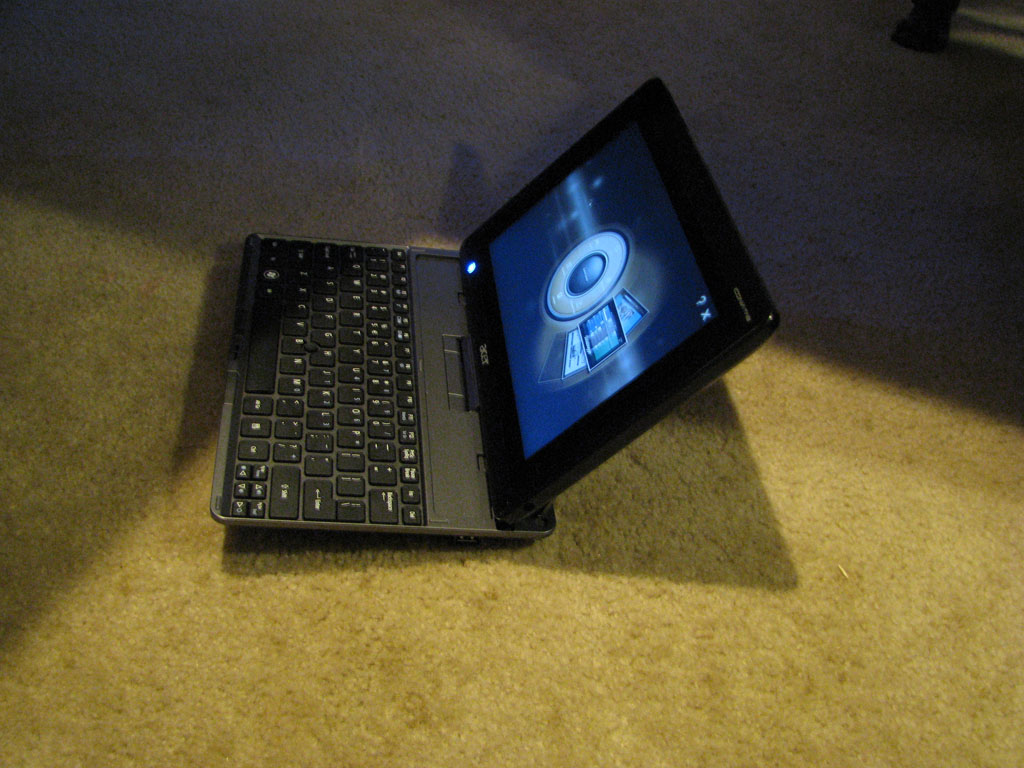
Off balance
You can’t even fold the screen forward as you would a netbook for easy carrying. You have to separate the two, clip the keyboard unit to the tablet (using magnets) and finally secure the safety latch so they stay connected.
In Use
|
||||||||||||||||||||||||||
I did not have to plug in the device during setup as it was already about 80% charged. After powering on the tablet and navigating through the initial setup, I was greeted with a traditional Windows 7 desktop screen.
The tablet immediately saw my Wi-Fi connection and seamlessly let me connect. By using the 802.11 b/g/n wireless capabilities, most users should have no problem connecting to wireless networks.
As with other Windows 7 tablets, control and navigation are problematic. On the other hand, control is easy and seamless when combined with the keyboard. Many functions like the Program and Options menus are difficult to navigate by touch. If you have average or larger-sized fingers, this tablet will frustrate you.
Many times it took several tries to click on what I was aiming for. Often the arrow would appear just above what I wanted to select. This is an unfortunate drawback that makes average use difficult and unproductive. The screen also proved to be a fingerprint magnet and the material that comprises the front viewing area is prone to glare.
![]()
There is plenty of protection provided within the packaging. All components are easy to get to.
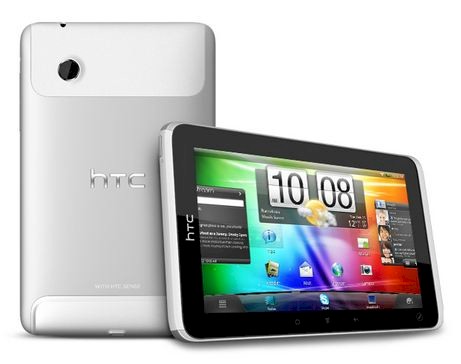
The tablet viewing area from the front.
![]()
The tablet and keyboard are very similar in size.
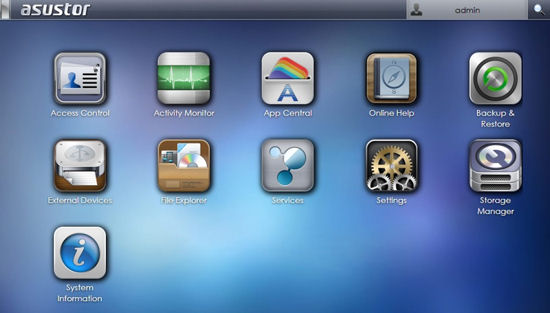
The home screen is a standard Windows 7 interface.
![]()
The software keyboard takes up over half of the screen.
![]()
The keyboard unit closes to protect the connection port.
![]()
When connecting to the tablet you have to lift the connection platform.
![]()
The tablet docks into the keyboard.
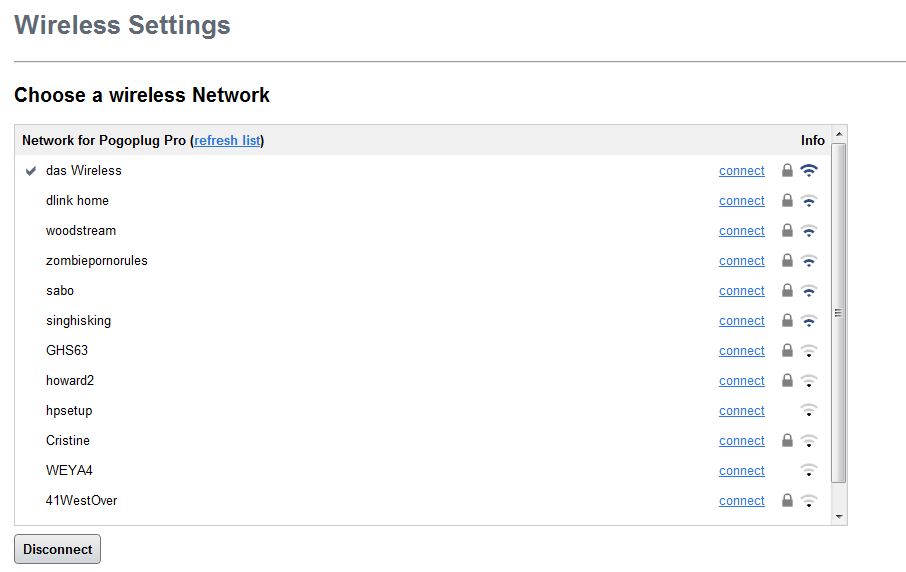
Both the tablet and keyboard connect for transport. But you have to first separate the two, then latch them together.

Left and side view diagrams from the user manual.
![]()
On the left of the tablet there is power and volume buttons, the HDMI port and the card reader.
![]()
On the right side there is the power connector.
![]()
Front tablet view with callouts.
![]()
Back tablet view with callouts.
![]()
The back of the tablet is a flat grey color.
![]()
Top and bottom edge views with callouts.
![]()
The bottom of the tablet has a USB port, lock button and the keyboard connector.
![]()
Top and front keyboard section views with callouts.
![]()
Left and right keyboard section views with callouts.
![]()
There is a single USB port on the right hand side of the keyboard.
![]()
The keyboard has an Ethernet port and a USB port on the right hand side.
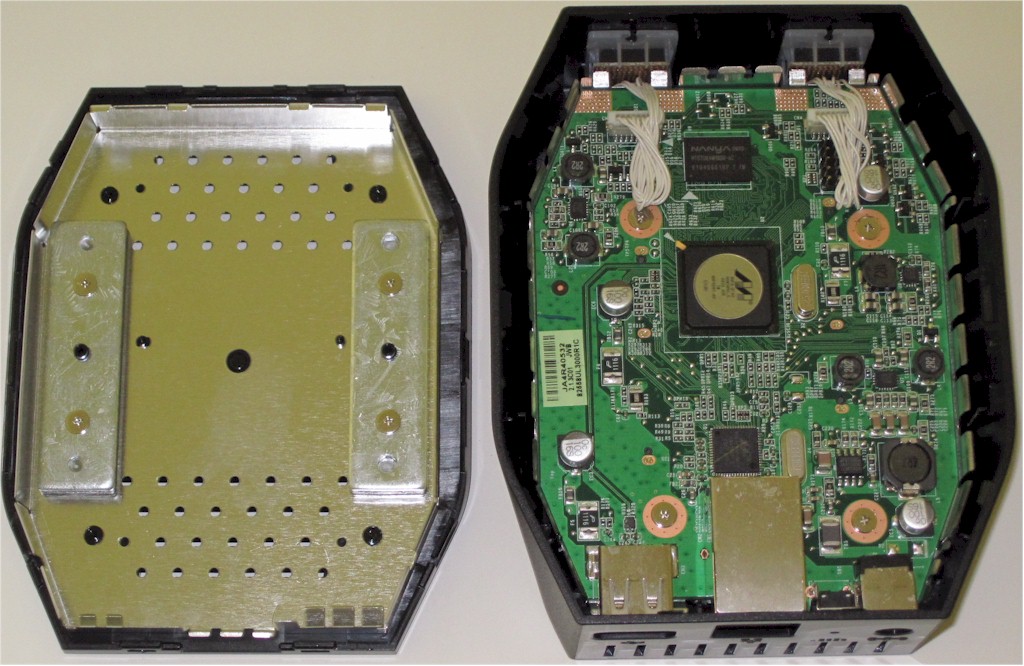
Pictures taken on the highest quality inside are not that good.
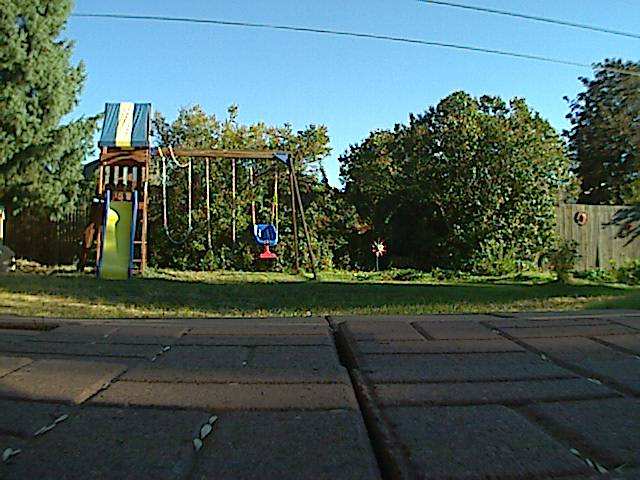
Pictures taken outside are okay, but not great.
Once you get past the initial issues, browsing the Internet is not as difficult. There is an option for a slide out virtual keyboard that can be docked on the right side of the screen. This virtual keyboard also pops up when you click on the URL bar or any other field that requests text input. But when opened, it takes up the lower half of the screen and blocks half of what you are looking at. This was not a great option as every time I wanted to type I had to alter between viewing my webpage and viewing the keyboard interface.
Docking the tablet to the keyboard attachment solved the on-screen keyboard issue, but created other problems. The first being the screen thought I had turned the tablet upside down. In reacting to this, the picture adjusted and was displaying 180 degrees from what I wanted. The only way to change this was to undock, and carefully re-dock the tablet.
I found that the picture direction is touchy and can switch the image interface when it is not wanted. Even tipping the tablet screen back can induce the image to switch upside down. There are also issues when transitioning from horizontal viewing to vertical viewing. Often the screen would freeze and take about 10-15 seconds to correct itself.
On a positive note, battery life was a plus. The three cell Li-polymer 3260 mA) battery is rated for a six hour battery life while browsing the internet and four hours for viewing HD video. Although I didn’t do a controlled battery rundown test, my experience didn’t contradict these specs. I was able to use the tablet sporadically over the span of a few days without having to charge it.
Media
Both video and audio are strong aspects of this tablet. HD video was clear and impressively pleasant to watch. I noticed there was little to no frame rate problems and many videos did not need buffering. While watching Hulu, I was pleased with the quality of the 480p playback. I was also able to watch movie reviews in 720p.
I did not have any problems viewing video from several different sites including CBS, Hulu, and CNN. Viewing streaming HD videos was a nice surprise. I was even able to view HD video game footage without any problems.
Screen viewing angles are well done and offer little degradation when being viewed from the sides both vertically and horizontally. Adobe Flash is supported with version 10.0 already installed. HTML 5 video was accessible and flash enabled websites were easily viewable.
I was also pleasantly surprised by the audio quality of the two stereo speakers housed at the rear of the tablet. While playing Pandora, I was able to easily hear the music from the next room. Audio remained clear when played at the highest volume settings and music quality was crisp with little distortion.
On the downside, as noted earlier, my test photos indicated that indoor and outdoor picture quality is poor compared to other tablets. There are a few examples in the gallery
Closing Thoughts
The Iconia Tab W500, in theory, should be a great device. But after spending time with it, the W500 failed to provide a pleasurable tablet computing experience. All of its great video and sound performance can’t make up for the clumsy Win 7 interface and difficult to use touch controls. Windows 7 has never been noted for outstanding tablet optimization and the Iconia Tab W500 is just another unfortunate example of this.
Acer did a good thing by not making the keyboard an optional accessory. But it failed in its integration design by making the docked duo untransportable without risk of damage and inflexible in use. If you like the idea of having an attached keyboard, you may want to look into getting a netbook.
I had high hopes for the Acer Iconia Tab W500, but those were quickly diminished by this little tablet that couldn’t provide a decent expierience. If you are in the market for a tablet, you should skip this one. It’s just not fun to use.
